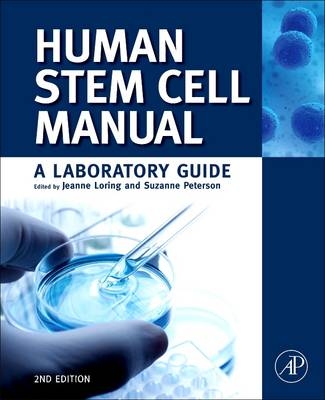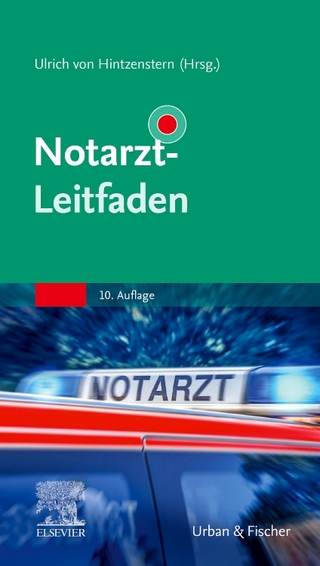
Human Stem Cell Manual
Academic Press Inc (Verlag)
978-0-12-810101-8 (ISBN)
- Titel wird leider nicht erscheinen
- Artikel merken
Suzanne Peterson received her doctoral degree from USC and immediately moved back to her home town of San Diego to pursue her Post-Doctoral work. A long-time member and the only native San Diegan of the Loring Laboratory at Scripps Research Institute, this summer Dr. Peterson followed her mentor Dr. Loring to Aspen Neuroscience and will serve as a senior scientist in the new founded lab. Her specialty is hematopoietic stem cells and she will continue to serve as co-editor of Human Stem Cell Manual: A Laboratory Guide with Dr. Jeanne Loring. Jeanne Loring is a world renown stem cell biologist, developmental neurobiologist, and geneticist. Dr. Loring's 3+ decades have spanned embryology and neurobiology, gene editing and stem cells, ultimately landing in regenerative medicine. Her decades of experience ranges from biotech, to pharma to bioscience and of course academia. She was the director for the Center for Regenerative Medicine and professor at Scripps Research Institute in La Jolla, CA for 12+ years. In June 2019 she founded Aspen Neuroscience, in La Jolla, where she and her staff will continue her work in regenerative medicine for those with currently untreatable neurological diseases. Their first target is a patient-specific neuron replacement therapy for Parkinson's disease. She will continue as Professor Emeritus and remains on the faculty of Scripps Research Institute. Dr. Loring has received numerous awards and accolades, including the 2015 Stem Cell Action Advocacy Award and 2015 Stem Cell Person of the Year.
Part I: Basic methods: Maintenance of stem cell cultures 1.Human Embryonic Stem Cell Culture 2.Feeder layers and feeder-free culture 3.Mouse Embryonic Fibroblast Feeder Cells 4.Cryopreservation of hESC
Part II: Basic methods: Characterization of stem cells 5.Classical Cytogenetics: Karyotyping 6.Spectral Karyotyping and Fluorescent in situ Hybridization 7.Using SNP Genotyping to Identify Cell Lines, Determine Genomic Abnormalities and Monitor DNA Methylation Patterns 8.FACS/Cell sorting 9.Fluorescence Immunocytochemical Analysis of Stem Cells 10.Characterization of Stem Cells Using RT-PCR 11.Gene Expression Profiling of Stem Cells by Microarray 12.Teratomas produced from Human Embryonic Stem Cells Xenografted into Immunodeficient Mice 13.Generation of HESC-Derived Teratomas
Part III: Differentiation of stem cells 14."Embryoid Body" Formation and Neuroepithelia Differentiation 15.Motor Neuron and Dopamine Neuron Differentiation 16.Oligodendrocyte Differentiation from hESC 17.Cardiac 18.Hematopoietic
Part IV: Genetic manipulation of stem cells 19.Genetic Manipulation of hESC: Lentivirus Vectors 20.Methods developed for mouse ES cells
Part V: Advanced methods 21.Derivation of human ES cells 22.Neural Stem Cell Culture 23.Transplantation of stem cells 24.In vitro fertilization 25.Functional characterization-neural cells
Part VI: Practical issues in establishing a human ES cell laboratory 26.Setting Up a Facility for hESC Research
Part VII: Essays on stem cell biology 27.Intellectual Property: Owning the Stem Cell 28.Ethical Concerns for Stem Cell Research 29.Guidelines for hESC Research Oversight (ESCRO) Committees
| Erscheint lt. Verlag | 30.10.2018 |
|---|---|
| Zusatzinfo | Illustrated; Illustrations, unspecified |
| Verlagsort | San Diego |
| Sprache | englisch |
| Maße | 191 x 235 mm |
| Themenwelt | Medizin / Pharmazie ► Medizinische Fachgebiete ► Notfallmedizin |
| Medizin / Pharmazie ► Studium ► 1. Studienabschnitt (Vorklinik) | |
| Naturwissenschaften ► Biologie ► Biochemie | |
| Naturwissenschaften ► Biologie ► Genetik / Molekularbiologie | |
| Naturwissenschaften ► Biologie ► Zellbiologie | |
| Technik ► Umwelttechnik / Biotechnologie | |
| ISBN-10 | 0-12-810101-6 / 0128101016 |
| ISBN-13 | 978-0-12-810101-8 / 9780128101018 |
| Zustand | Neuware |
| Haben Sie eine Frage zum Produkt? |
aus dem Bereich


